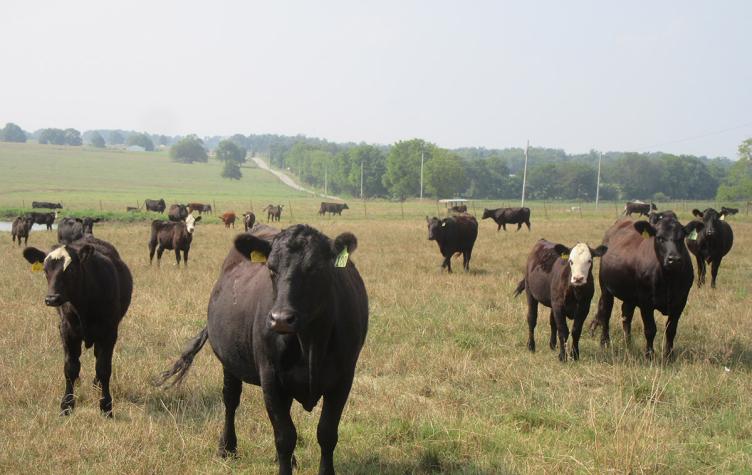COLUMBIA, Mo. – Cattle rid their bodies of heat in three ways: radiation, convection and evaporation. “If your cattle can’t use all three methods, they’ll overheat fast,” says University of Missouri Extension state beef nutrition specialist Eric Bailey.
Summer heat knocks weight off calves and pounds off milk, Bailey says. Losses come in the form of less gain, weaker fertility and other health issues. “Heat stress costs real money,” he says.
Producers can reduce heat stress by providing adequate shade, proper fly control, access to water and the right choice of pasture grass.
Tall fescue pastures turn up the heat
Cattle grazing on tall fescue grass when temperatures rise is a recipe for disaster.
Toxic endophytes in fescue can turn up the cattle’s body heat. Their efforts to keep cool can melt profits. But there are practical fixes that keep weight and profits steady, Bailey says.
Most fescue pastures in the Fescue Belt carry endophytes that make toxic ergot alkaloids, which mess with your cattle’s ability to stay cool, he says.
These toxins tighten blood vessels, cut blood flow to the skin and prevent heat from escaping. They make it hard for cattle to sweat and pant, essential tasks to rid their bodies of heat. Third, ergot alkaloids delay shedding by lowering prolactin. This leaves cattle with shaggy coats that trap summer heat.
Summer temperatures, especially heat waves, make cattle on fescue vulnerable to problems. Normally, cattle can tolerate temperatures of 31 C or 88 F. Cows likely consume enough ergovaline by Memorial Day to make heat stress worse during the summer.
Small amounts cause big losses
Even ingesting small amounts of ergot alkaloids can result in reduced weight gain and smaller calves, less milk, lower fertility and lighter wallets, says Bailey. He offers these suggestions on avoiding losses from heat stress:
• Rotate toxic tall fescues with other grasses such as clover, or interseed pastures with nontoxic novel-endophyte fescue to dilute.
• Consider investing in full pasture renovation on the worst fields. See the Alliance for Grassland Renewal website for information on renovating tall fescue pastures.
• Provide supplemental feed in the range of 0.5% to 1.0% of bodyweight per day to dilute ergovaline in the diet.
Maintain good fly control
If you have cows on tall fescue, pay special attention to fly control.
“If your cattle are on toxic tall fescue and they are crowding together to dodge flies, the deck is stacked against them,” says Bailey.
Cattle tend to bunch up to avoid flies, especially stable flies that attack their legs. They congregate in the middle of the pasture and avoid the field edges where flies gather most.
Bunching traps heat, cuts radiation and convection in half, and raises humidity significantly. “In severe cases, cows quit radiating heat and actually begin to heat up even in the shade,” says Bailey.
Here’s the fix:
• Drag pastures to break up manure, which is a breeding ground for flies.
• Use fly tags, traps or parasitic wasps to cut fly numbers.
• Finally, rotate pastures to break fly life cycles.
Give your herd shade
Bailey gives guidelines to discourage bunching and encourage cattle to space out in pastures:
• Provide 20-30 square feet of shade per cow.
• Provide portable shade structures that allow airflow.
• Place water troughs 50-100 feet apart to encourage animals to spread out.
Finally, radiation and convection need cool surroundings and airflow to work, says Bailey. “They fail when it’s hot and crowded. Evaporation is the last line of defense in a heat wave, but humidity and fescue toxins can cripple it,” he says.
For more information, see the MU Extension publication “Tall Fescue Toxicosis” (G4669), which is available for free download.
